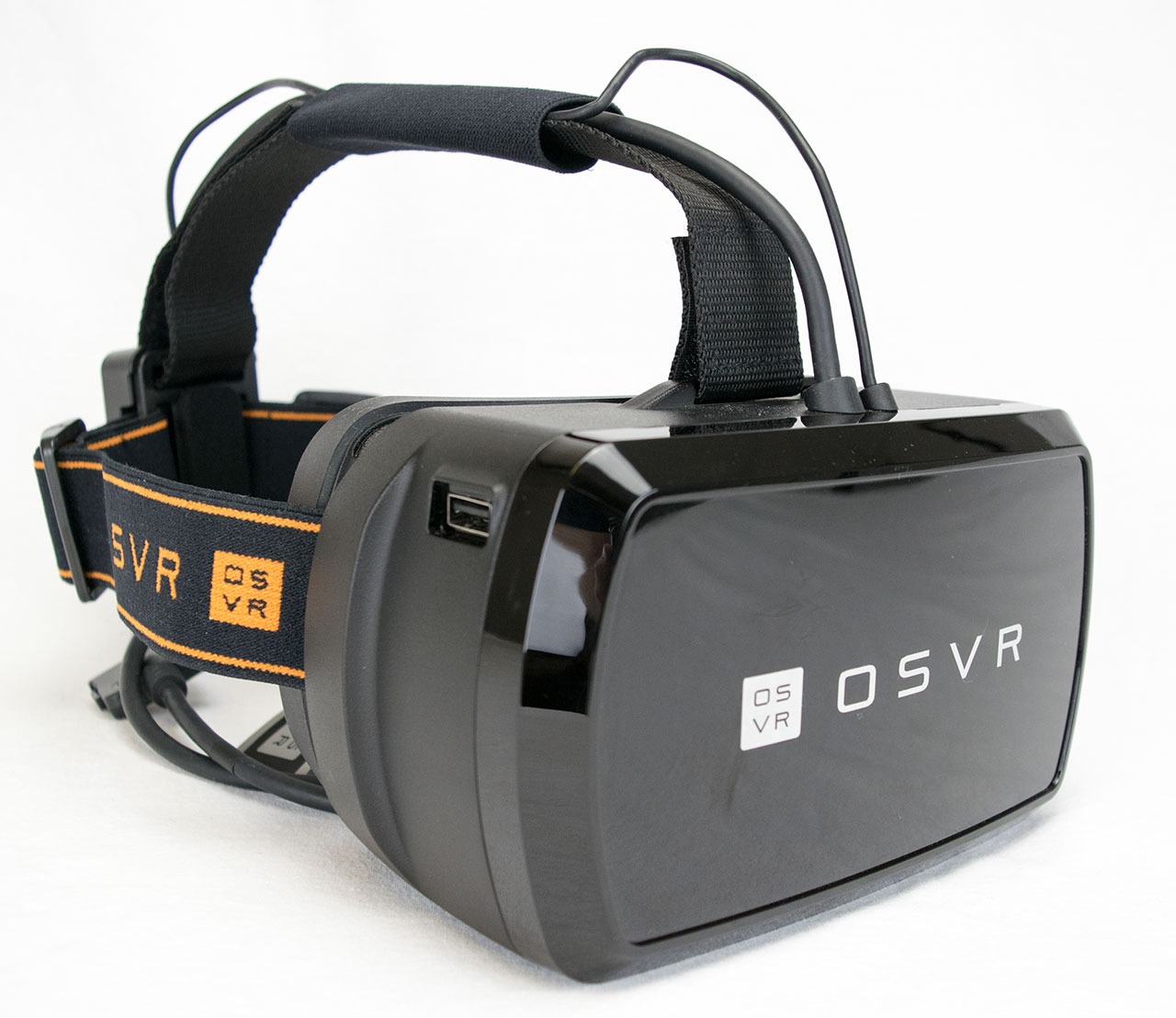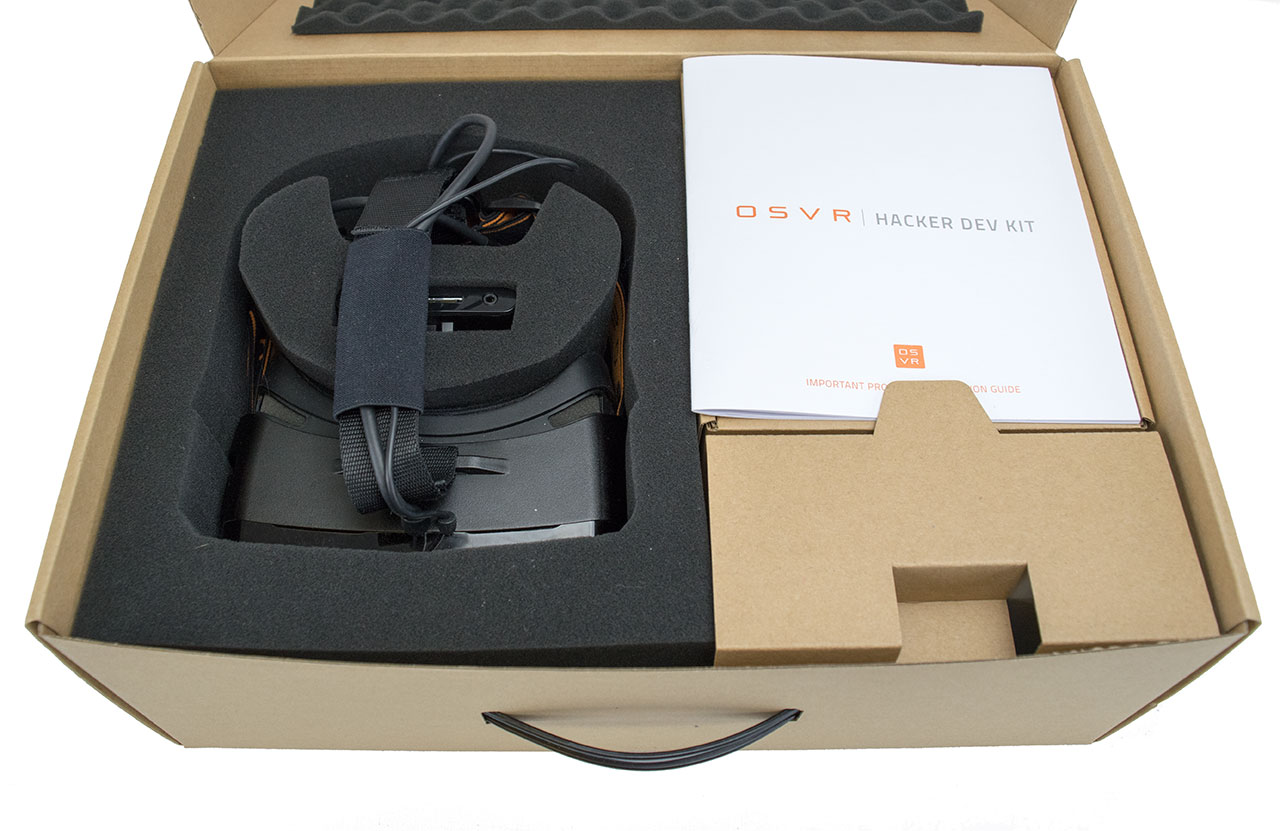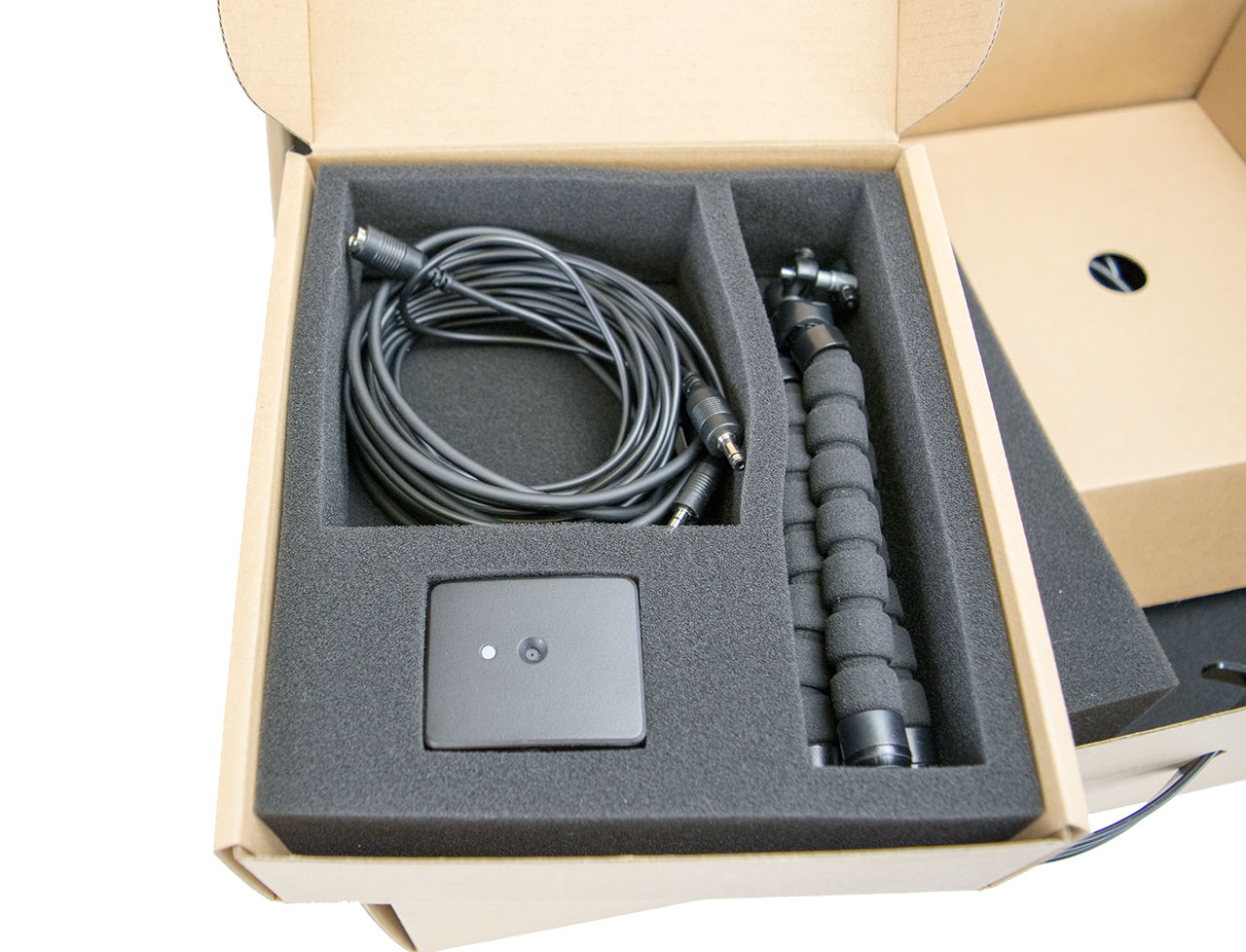Early Verdict
The OSVR HDK is far from perfect. It suffers from some tracking hiccups and the ergonomics could use some refinement, but if you wan't to get an early start in the world of VR and can't afford the graphics cards needed for that experience, the OSVR HDK 1.4 will likely allow you get into VR without the GPU upgrade.
Pros
- +
Affordable
- +
Compatible with SteamVR
- +
Upgradable
- +
Low GPU requirements
Cons
- -
Inconsistent tracking performance
- -
Heavy
- -
Finicky configuration process
Why you can trust Tom's Hardware
Introduction
Consumer virtual reality was a pipe dream for a long time, but it's now becoming tangible. Oculus started shipping its first developer kits three years ago, Google launched Cardboard over a year ago and Samsung launched the GearVR with the help of Oculus late in 2015. Those two latter products exposed millions of people to virtual reality.
Mobile VR is the entry point to virtual reality, costing as little as $10. Of course, there are much higher-end products available. The Rift launched in late March with high refresh rate, low-persistence displays, positional tracking and refined, comfortable fit and finish. But Oculus asks $600 for the privilege of owning its platform. HTC’s Vive offers a more advanced package with room-scale tracking and wand controllers, but it commands an even higher $800 price tag. On top of that, both systems require high-end computers to drive them competently.
The price of PC-connected VR hardware is simply out of many enthusiasts' reach. Fortunately, there is a more affordable option available if you aren’t afraid of some tinkering. OSVR (Open Source Virtual Reality) offers a kit through its partner, Razer, which can get you inside of virtual worlds for a lot less money. The OSVR Hacker Developer Kit 1.4 opens the door to anyone who wants to dip their toes into VR, but can’t quite afford the Rift or Vive.
If you don’t have $600 burning a hole in your pocket, but want to see what VR is all about, the OSVR HDK might be worth your attention. Razer sells the OSVR HDK 1.4 for $300. That's a far cry from the Vive or Rift. Its requirements are also much less demanding, so there's a good chance your current PC can deliver an enjoyable experience.
What’s In The OSVR Box
The OSVR Hacker Developer Kit comes packaged in a fairly generic cardboard box aside from the OSVR logo emblazoned across the front and back.
The headset rests inside a thick layer of closed-cell foam to keep it protected during shipping. Its straps wrap around a large piece of foam that contains a device OSVR calls the belt box module. The belt box is similar to HTC's link box, except it clips to your waist rather than sitting on your desk.
| OSVR HDK 1.4 Box Contents | |
|---|---|
| Hardware | OSVR HDK 1.4 HMD |
| IR tracking kit with tripod | |
| Cables | USB / HDMI combo cable |
| 2.5m Tracking camera power cable | |
| 1m Micro USB cable | |
| Power adapter | |
| Controls | Not included |
| Miscellaneous | Cleaning brush / air blower |
| Wordwide power adapter package | |
| Downloadable Software | OSVR Runtime software |
The OSVR HDK 1.4 includes an infrared positional tracking kit. The IR faceplate was previously an optional upgrade for the OSVR HDK, but it now comes installed on the HMD, which is tracked by an infrared camera that connects to your computer via USB. It is powered by a cable that piggybacks off of the headset’s power source. The IR tracker is surprisingly small; the entire camera measures approximately 1.5 x 2 inches and is roughly one-third of an inch thick. The bottom of the camera is threaded, and Razer includes a small flexible tripod to screw in so you can place the camera on your desk.
Get Tom's Hardware's best news and in-depth reviews, straight to your inbox.
Under the IR tracking kit, you'll fine a 10-foot braided cable that combines USB 3.0 and HDMI connectivity. It also includes a 12V, 2.0A power adapter bundled with five interchangeable plugs, so you should be able to use it in any region. A small lens brush blows air when you squeeze it; that's tucked inside the same box as the power adapter. Meanwhile, a quick-start guide with a handy diagram shows you all of the components in the box, while an information guide steps through plugging the system in.
MORE: The History of Virtual Reality
MORE: The HTC Vive VR Launch Titles
Kevin Carbotte is a contributing writer for Tom's Hardware who primarily covers VR and AR hardware. He has been writing for us for more than four years.
-
Jeff Fx > can a 60Hz 1080p display really deliver a compelling VR experience?Reply
If you can get games to work with it, maybe, if you haven't experienced modern VR and aren't susceptible to VR sickness.
I had an eMagin 800x600 per eye VR system a decade ago, and it was pretty good for people who don't get VR sick, until Nvidia dropped support and it became useless.
I'd recommend saving up for a Vive, the only full-VR system available today. Buying a low-quality alternative to something nice rarely turns out well. you'll just wind up junking it and spending the money on what you really wanted later. -
John Nemesh The only thing worse than having buyers remorse after buying an $800 VR setup like the Vive is having buyers remorse after doing the "responsible" thing and finding out that it isn't what you really want...then flushing that "savings" down the toilet when you go and buy what you should have bought in the first place...Reply -
John Nemesh Wish I could edit posts...just for the record, I have ZERO buyers remorse with the Vive!Reply -
alidan Personally, all i want of vr is 3d, and track my head, that's it, no room scale no controllers, just simple sensors because what i want is a sit down experience with my head acting as a camera input, especially for racing games.Reply -
picture_perfect Sounds like a "me too" effort by Razer. I don't see much point in any more VR systems right now because the technology cap has already been hit by Oculus/Valve. Until computer performance increases we probably won't see much better. Well we might, but this isn't it.Reply -
caustin582 I'm a Vive owner and while I have been pretty happy with my purchase, if there's one thing I could change it would be for it to have a higher resolution. Even at 1080x1200 per eye the individual pixels are easily visible and the image looks nowhere near as sharp as when I'm gaming on my old 1080p monitor. When the screen takes up such a wide field of view, the resolution needs to go way up in order to compensate.Reply
So it's kind of crazy to me that some companies think they can put out a good HMD that only splits a 1080p screen across both eyes. It might be worth it as a super-budget option for $99, but at $300 it's not all that cheap. Like it's not something most people are just going to buy on a whim and then happy forget about after they realize it looks ugly and makes them sick. Hate to be a downer but this really seems like the worst of both worlds. If you want a quick, cheap VR experience, you can build or buy a Google Cardboard. If you want the real thing, save up a little while longer and get an Oculus or Vive (or just wait until those are $300). -
bit_user Thanks for the review, but just skimming the first page, I'm surprised not to see any mention of the HDK2.Reply -
bit_user Reply
You can in the forums. Just follow the link at the top of the comments.18272515 said:Wish I could edit posts...
Um, it was more of a "me first" effort, with the initial version beating them to market by about a year. I think the author dropped the ball on explaining HDKs origin and backstory. Although it's touched upon, in the last page, I think the rest of the review would've been better served by covering it in a little more depth, right up front. Otherwise, it's not clear why the product compares so poorly with Vive and Rift. It was made to compete with Oculus DK/DK2-era hardware. And the whole review should've been prefaced with the caveat that they're basically reviewing an obsolete product (see above point about HDK2).18272741 said:Sounds like a "me too" effort by Razer. I don't see much point in any more VR systems right now because the technology cap has already been hit by Oculus/Valve.
I'm also puzzled as to why you feel there's only room for 2 players, in this young and dynamic market. Would you say that about any other aspect of computer hardware? (true that, defacto, we have 2 players in CPUs and discrete GPUs, but that's more an issue of cost to enter those markets vs. upside potential).
I'm really glad to see a low-cost solution in between phones and the premium PC HMDs. Maybe 1.4 isn't yet a compelling value offering, but I think there's definitely room for other players and other segments in this market than Vive/Rift. -
kamhagh Doesn't look good :S even my 2k note 4 looks ridicules, I know you can't compare them ut you can compare the pixels :S my view is filled with dotsReply
BTW: why are all vr games stupid space games? :|


